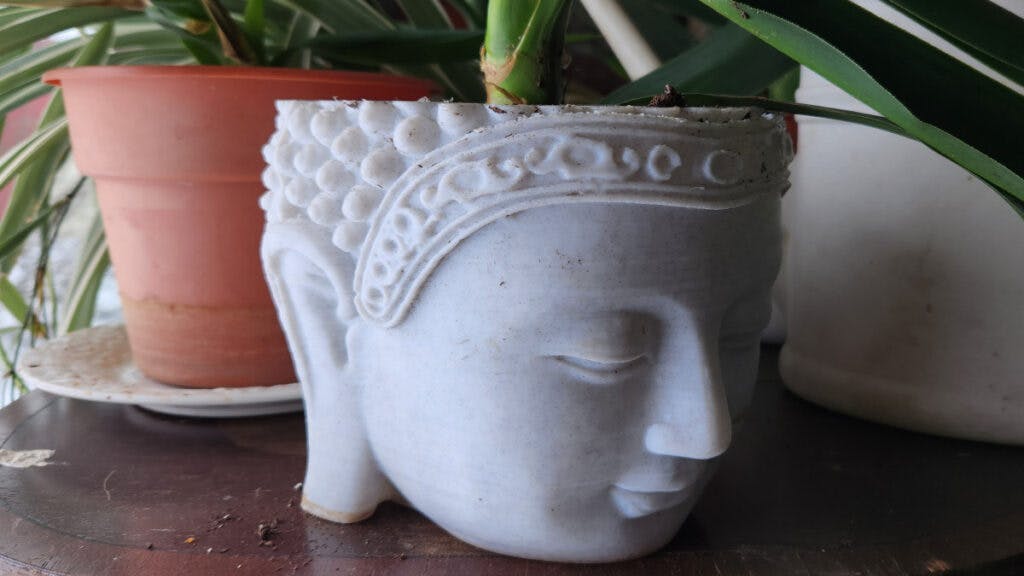5 Things You Probably Didn’t Know Your 3D Printer Could Do
By Adama Brown,
When you buy through our links, we may earn an affiliate commission.
If you have a 3D printer, you’ve probably discovered some of the many fun things that can be done with it. But for the new hobbyist, here’s a few things that you may be surprised to find that your printer is capable of.
Printing wooden objects
Among the many types of filament available for use in 3D printing are wood-infused types. These filaments aren’t wood per se; they’re more like wood powder bound together by heat-sensitive glue. They heat up and become fluid just like the plastic used in ordinary filament.
Quality varies, but with good brands the end result is an object which looks and feels much like it was made out of real wood. A good wood-infused PLA can even be sanded and stained like the real thing, to get just the right look for your project.
Thus, you can use your 3D printer to help make projects that feel considerably more old-school, like a hand-stained jewelry box without all the effort of carving it yourself, or a Viking longboat that looks just like traditional wooden model.
One thing to remember though is that printing filaments like this with an abrasive texture will, over time, wear out your printer’s standard brass nozzle. If you intend to use abrasive filaments on a regular basis, you might invest in a nozzle made from hardened steel.
Printing glow-in-the-dark objects
Although there’s plenty of different types and colors of plastic filament out there, maybe you want to make that piece of wall art extra special, or make a surprise for your kids. One of the most distinctive types of filament available is actual glow-in-the-dark plastic.
Just like the glow-in-the-dark stuff you can buy in a store, this filament “charges up” under light, then glows gently for awhile afterward. Except now, you can make anything glow in the dark, from a custom keychain fob that helps you find them at night, to a bookmark, a light switch plate, or anything else you can imagine.
Making molds
Suppose you find a 3D model that you really like, but want it made out of something other than plastic? Take, for instance, this lovely planter in the shape of a traditional Buddha head, found on Thingiverse. Nice looking, but maybe it would look even nicer cast in a high grade mortar or clay for that stone look?
The answer is simple: Use your 3D printer to make the object into a mold for whatever material you actually want to create with.
Turning a 3D model into a mold is surprisingly easy. Cura Slicer, the default app which comes with Creality Ender series printers for turning models into printable code, offers a “Mold” option under the “Special Modes” menu.
This allows you print the inverse of whatever 3D model you can load into Cura. You can even use Cura to cut a model in half to produce a two-piece mold for larger or more complex objects.
You can then fill the mold with your material of choice: epoxy, silicone, mortar, etc. When using food-safe materials in your 3D printer like PLA or PET plastics, you can even create your own chocolate molds. So if you want to make a chocolate rose for your special someone–or a chocolate trilobite for those so inclined–now you can.
Note that if you choose to use something like mortar, you should use a fiber-reinforced concrete to ensure that your final product isn’t too brittle to survive, and be careful casting any parts that are particularly thin or delicate.
Also, while PLA and PET are considered “food safe,” the many small layer lines of a 3D printed object may act as harbors for bacteria growth in time; it’s better to use these molds once and then discard or recycle them.
Wood carving and engraving
Wait, what? Yes, really: your 3D printer can be used for woodworking. It’s a little more complicated than some of the other things described here, though.
A 3D printer’s main function is to very accurately move the print head to given coordinates. What it does there can be changed by simply swapping out the print head for something else. Kits exist to replace the regular plastic print head of a 3D printer with a small, intense laser capable of cutting into wood.
In fact, it’s rated to be able to cut through up to 12mm (just under 0.5 inches) of balsa wood in a single pass, with a precision of 0.06mm. Harder woods will obviously take longer, but for anyone interested in woodworking, specialized gifts, or just being able to customize their own stuff, doing so with computer precision in your own home is now just a click away.
“Printing” with food
Another example of what you can do simply by swapping the print head, LuckyBot makes an Ender 3 attachment for “printing” objects made out of foodstuffs. Chocolate, cheese, frosting, jam, even mashed potatoes–anything with an acceptable consistency.
While it’s not exactly a day to day use case, it’s fascinating to see the kind of flexibility that 3D printers can allow with minimal modifications that you can install yourself. And for anyone who enjoys baking, or even wanted to turn custom chocolates and cakes into a side hustle, it’s a modification that could pay for itself.

